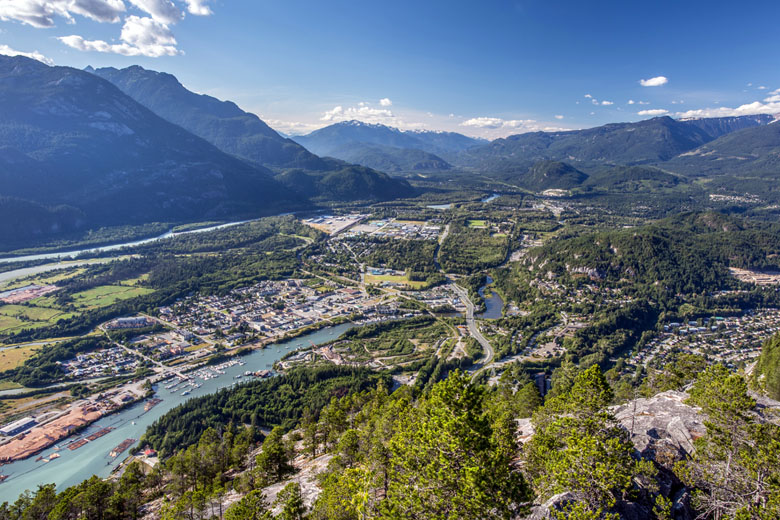



The Sea to Sky Highway twists along the shore of Howe Sound just an hour north of Vancouver, Canada. On a summer morning, the air is thick with fog that rolls off the water and blankets the northwestern pine forests and soaring granite cliffs. Relics of an industrial history dot the roadside: lumber mills, abandoned mines, and the railway that first brought non-native settlers here in the early 20th century. As the highway continues, the walls progressively become taller, revealing the colossal 2,000-foot east face of the imposing Stawamus Chief. Nestled below on the edge of Howe Sound is one of the next great adventure towns in North America: the commune of Squamish, British Columbia.

Squamish is a name that resonates with outdoor adventure, and rock climbing in particular. Highway 99, which opened the passage from Vancouver to Squamish in the late 1950’s, brought legendary climbers like Fred Beckey and Peter Croft who pioneered routes on "The Chief". Many liken the quality of the massive wall to Yosemite’s El Capitan and it offers a bevy of routes to the top from 5.10 and 5.13. Multi-pitch routes are ubiquitous rising up the manifold buttresses, and single-pitch climbs accessed via the ground are peppered in through the area. The countless routes and problems spread across Squamish attract climbers from all over the world for challenging ascents such as Cobra Crack, one of the hardest crack climbs in the world, and Dreamcatcher, a complicated series of campus moves and heelhooks leading out a 45 degree overhang. Just north of the Squamish Adventure Center, Smoke Bluffs Park holds over 20 bolted sport climbs, 14 boulder problems, and 91 trad routes. Farther north from downtown, Cheakamus Canyon has over 187 sport routes, many which start within minutes of the parking area. The climbing in Squamish is so abundant that groundbreaking routes are still being discovered today.
Under the white slopes of Mt. Garibaldi, Squamish also has some of the top hiking trails in British Columbia. The summit of The Chief is accessible via the Shannon Falls trail (6.8 miles roundtrip), with options to visit all three peaks or the most popular southern peak for a breathtaking view over Garibaldi Park. One of the most spectacular trails in the area, Cirque Lake, is located 23 miles north of Squamish and requires a kayak or canoe crossing of Callaghan Lake to reach the trailhead. Although the hike is short, the remote, pristine, and virtually untouched wilderness makes it a must-see. And mountaineering in British Columbia was born in the hills north of downtown—Black Tusk, a sharp, black volcanic pinnacle, was first ascended in 1917 followed by the establishment of Garibaldi Provincial Park three years later.

In the winter, snow blankets Squamish and the town undergoes a transformation into a prime destination for winter sports. As the climbing walls freeze, opportunities for ice climbing abound and the world-class ski resort of Whistler is less than an hour away (many of the Olympic facilities for the 2010 games are open to the public). Heli-skiing operations based in downtown provide access to the remote Coast Mountains, while the Sea to Sky Gondola takes visitors to trails over 2,000 feet above the city where snowshoe and cross-country ski trails overlook Howe Sound. Squamish is a city that retains its traditional and cultural roots. An Inukshuk statue looks over the mountains, named and looked over by the Squamish Nation who settled here over 3,500 years. While appearing as a modern adventure town, the First Nation people stick to their customs and values with festivals and a sense of tradition that emanates throughout. The walls and trails of Squamish are still being explored and the town itself is relatively young, so for those looking for uncharted adventure, this little pocket of British Columbia is prime.